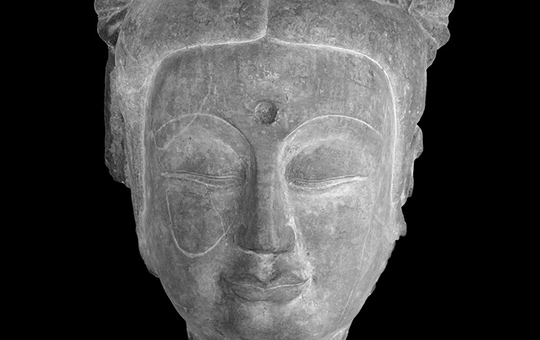Asian Section

Vol. XVII / No. 1
By: Ananda K. Coomaraswamy
A Statuette Of Vishnu From Kashmir
The Museum of the University of Pennsylvania is the fortunate possessor of a very finely sculptured and well preserved statuette […]
View Article
Vol. XVII / No. 1
By: Helen E. Fernald
Some Chinese Grave Figures
I Introduction Mention was made in a recent article in THE MUSEUM JOURNAL1 of some Chinese grave figurines which have […]
View Article
Vol. XVII / No. 1
By: Helen E. Fernald
Three Ming Pottery Figures
Vistors to the University Museum have noticed for some time past a group of three pottery statuettes in the Chinese […]
View Article
Vol. XVI / No. 3
By: Helen E. Fernald
Mortuary Figures Of The T’ang Dynasty
On May 22, 1925, there was opened to invited guests of the Museum an Exhibition of Chinese Art which included […]
View Article
Vol. XV / No. 4
Gandhara Sculpture
Among its more recent acquisitions, the Museum is fortunate in having a group of the Graeco-Buddhist sculpture found in the […]
View Article
Vol. XV / No. 4
Chinese Sculpture Recently Acquired
A number of important pieces of Chinese sculpture accumulated during the last two years deserve special mention, though at this […]
View Article
Vol. XIV / No. 1
By: George Byron Gordon
A Fine Chinese Stela in the Museum
The votive stela recently acquired by the Museum is one of exceptional interest and importance. Its outline and proportions are […]
View Article
Vol. XII / No. 2
By: C. W. Bishop
Shantung, China’s Holy Land
Not chance alone has brought Shantung, instead of some other of China’s Eighteen Provinces, to the fore at the late […]
View Article
Vol. IX / No. 3-4
By: C. W. Bishop
The Horses of T’ang T’ai-Tsung
Of the Antecedents of the Chinese Horse Before attempting to describe the series of reliefs so widely known as the […]
View Article
Vol. IX / No. 2
By: C. W. Bishop
Recent Accessions Of Chinese Sculpture
It is becoming steadily more evident as archæological study progresses that advancement in the arts of civilized life is as […]
View Article
